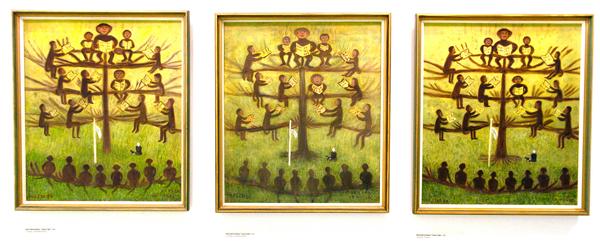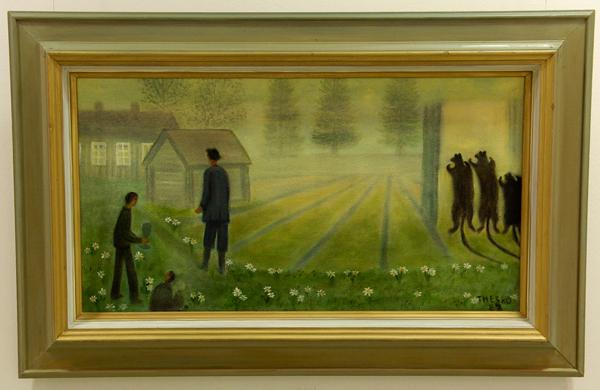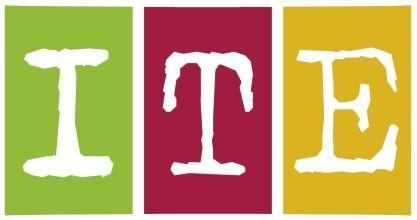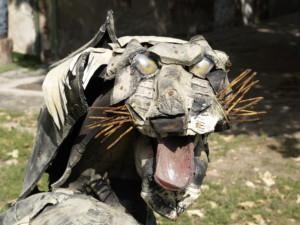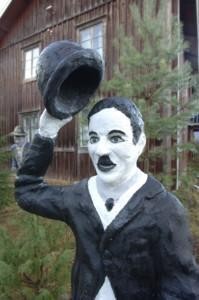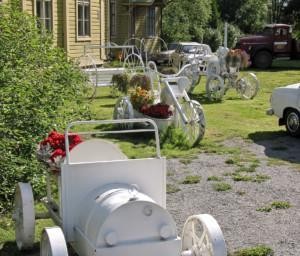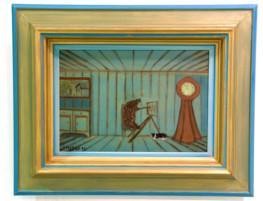
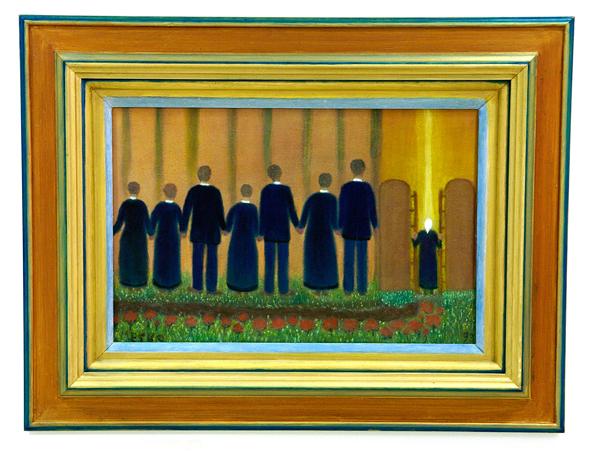
Tyyne Esko
Kokkola (1920–2011)
Tyyne Esko began painting when she retired in 1972. For most of her adult life she did arduous cleaning work, often looking after two such jobs at once. Her husband was frequently ill and she was the main breadwinner for her family of four children. Life was hard, and she recalls having suffered much injustice and downright poverty in her time.
Having always wanted beautiful pictures on her walls, Esko decided to produce them for herself, without taking any courses or receiving any other instruction. Her early subjects were either flowers or houses, but the most original of her mature works are acrid expressions of social protest or sensitive responses to poems or song lyrics.
For Esko, art has been a matter of inner compunction, or one might say a means of survival: “Many people in Finland turn to the bottle to help them cope, but I just have my pictures.” Once she had made a start, she would put in regular working days at her painting, just like a professional artist, so that although it didn’t bring her any income, it was like a new job for her, and one that made her feel good at the same time.
Soon she was breaking into the real world of art. She began to put her works on display and even to arrange exhibitions of her own, and she began to apply for scholarships. She received much favourable and encouraging feedback from these exhibitions, which were frequently held in places further afield than her home town, but eventually she had to give up painting in the mid-1990s, when her hands, neck and back could no longer stand the strain.
Tyyne Esko’s protest paintings are precise encapsulations of social injustices, the misdemeanours of politicians and bureaucrats, human greed and blind belief in technology. They refer quite pointedly to those in power grabbing wealth for themselves and treading ordinary people underfoot, and their message is often reinforced by the clarity of the presentation, a certain exaggeration and the presence of many shades of humour, often backed up by written words superimposed on the pictures. Some of the paintings are concerned more directly with her own life and her experiences of the world of art. She has not shown deference to any particular authorities merely as a matter of form, but has joined in the political debate of her day as much with her paintings as with her letters to people in positions of responsibility. She is a merciless critic of the exercise of power and an outspoken defender of those who are in a weaker position. She often depicts herself in the paintings as an observer of the events that are described; a slight figure with a scarf over her head and a dog at her side.
Her poetic works provide pictorial substance for the atmosphere of fantasy to be found in poems, ballads and song lyrics. The topics she selects come from the texts with which she most easily identifies, often texts which have a point of contact with her own experiences or feelings.
Even when dealing with the most violent of topics, however, Tyyne Esko displays an innate sense of beauty and a striving towards harmony in her choice of colours. The disposition of her works is reserved and is often based on symmetric patterns and a precise grouping of features. The natural surroundings in which the action takes place are always beautiful, however startling the message of her work may be, and this makes the pictures especially poignant, speaking out on behalf of beauty, justice and honesty.
Text: Satu Itkonen
